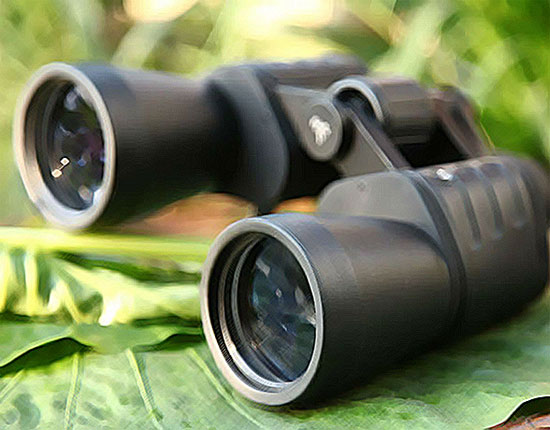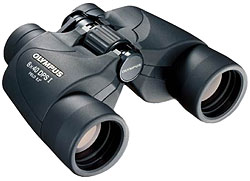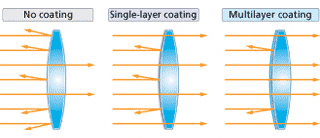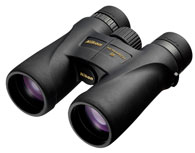Low Cost vs Very Cheap Binoculars

I received a question this week from someone looking to buy some good, but low-cost binoculars for general outdoor use, but they are unsure on what to get and indeed how little they should/need to pay to get a decent pair. So I have decided to use their question as a basis for an article that explores the differences between poor quality, very cheap binoculars and those that I would still class as low-cost but are of a reasonable to a good standard:
 Question:
Question:
I’m looking to buy some entry-level bins for general outdoor use. I’ve found your website really helpful and was about to commit on the KOWA YF 8x30. But just before I did I saw the Olympus 8x40 8x40 DPS I for £100 ($120) less on Amazon!
As I’ve read on your website, understandably you can’t review all binoculars and unfortunately, this includes the Olympus but I see you are aware of the model range I’m interested in. I’ve found all your information really useful but feel like there’s some flaw in the Olympus I’m missing and would be grateful for you’re advice on what I would be missing with the Olympus.
From what I’ve learnt so far, the Olympus has a larger OLD (objective lens diameter), giving greater Exit Pupil and the field of view is 10m wider; so is possible the Olympus will produce a better picture?
I can see the Olympus is considerably heavier 710 vs 475g, has smaller eye relief 12mm vs 16mm (not a problem I believe as I don’t wear glasses…yet), and isn’t waterproof (but does has 25yr guarantee, which I wonder if it would cover water damage…)
So in conclusion I’m afraid to buy the Olympus as I’ve got the impression from your website it’s not possible to get a decent pair of bins for ~£50 ($50). Yet on paper, I think they could give better image quality and even if they are inferior build quality I could go through 3 for the price of the KOWA!
Any advice and or suggestions would be really appreciated.
Answer
 You are right, the Olympus 8x40 DPS I is available at what looks like a fantastic price on both Amazon.co.uk (£43.80) in the UK and for only $49.95 on Amazon.com in the US, where they are often referred to as the Olympus Trooper 8x40 DPS 1 Binoculars.
You are right, the Olympus 8x40 DPS I is available at what looks like a fantastic price on both Amazon.co.uk (£43.80) in the UK and for only $49.95 on Amazon.com in the US, where they are often referred to as the Olympus Trooper 8x40 DPS 1 Binoculars.
So what (if any), compromises have they made to produce these, or are they as good as slightly higher priced products and in particular the Kowa YF 8x30 Binoculars?
As I go over in my section on how to choose between binoculars, the best way to start, if you can’t find a review on the bins you are interested in, is to make a table that lists their main specifications and features, so that they can easily be compared:
So above I have added their main features and specifications that I obtained from the manufacturer’s website as well as that of a few other low-cost binoculars that I would say are well worth adding to your shortlist to compare them with.
Anti-Reflection Coatings
One difference that really stands out for me is that the Olympus is advertised as only having a “Monolayer Coating”, where as you can see all the other examples I have listed are Fully Multi-Coated. This is one area that you must keep a close eye on, especially when looking at cheaper binoculars.
So what does this mean?
 Binoculars these days have from about 10, right up to about 20 separate glass surfaces within them and each of these can potentially cause unwanted reflections or disrupt the light in a way that is not desired.
Binoculars these days have from about 10, right up to about 20 separate glass surfaces within them and each of these can potentially cause unwanted reflections or disrupt the light in a way that is not desired.
So what manufacturers do is to add special optical coatings, usually made from calcium or magnesium fluoride to these surfaces. Each of which is specifically designed to interfere with certain wavelengths or colors of light and thus it is possible to better direct the wavelengths of light, reduce glare and reduce the amount of internal light loss and so they can really make a huge difference to the image contrast, brightness and overall quality.
However, these coatings cost money and so to keep the manufacturing costs down on cheap binoculars, they will not only reduce the amount of glass surfaces that they coat, but also the amount of layers of these coatings on the surface that they do coat.
“Fully Multi-Coated” optics is ideal as ALL the glass surfaces have received Multiple layers of anti-reflection coatings which usually results in a transmission level of approx. 90-95%.
But what you will find on many low cost binoculars is that they only have “Multi-Coated” optics meaning that only SOME of their glass surfaces have received Multiple layers of anti-reflection coatings.
Worse than that are simply coated or as Olympus describe theirs as having a “Monolayer coating” – this means that only SOME surfaces (they don’t say how many, but it is usually just the first and last lens surfaces) have received just a Single anti-reflection coating.
What difference can this make?
If you look at the table below, it shows that an optical system with 10 glass surfaces that are left uncoated transmit just 66% of the light that they initially capture, whilst if all 10 surfaces are multi-coated, this can be raised to 95%. If we assume that the Olympus had 10 and just two of them have a single coating their transmittance will not be much higher than about 70%.
| Transmittance Levels | ||
| Per Single Lens Surface | 10 Lens & Prism Surfaces | |
| No Coating: | 96% | (0.96) x Power of 10 = 0.66 66% |
| Single-Coating: | 98.5% | (0.985) x Power of 10 = 0.86 86% |
| Multi-Coating: | 99.5% | (0.995) x Power of 10 = 0.95 95% |
So whilst you are right in saying that the larger objective lenses on the Olympus will produce a larger exit-pupil than that of the Kowa, I am fairly certain that the image you see through the Kowa will be brighter, especially in low light conditions as well as have a much better overall quality. However as I have not looked through the Olympus or compared them I can’t be completely, but it is something that I have often witnessed with similar types of comparisons.
Waterproofing
Most good quality binoculars these days are fully sealed, but unless you plan to go out in the rain, does this really make a difference?
YES, I believe it does as it not only prevents moisture from getting inside the instrument, but will also obviously stop other small particles like dust entering and spoiling your view.
As well as this, for me, fully sealing the unit is a major indicator within this price range to the all-round quality of the binocular and shows what level of effort the manufacturers have gone to, to make your binoculars. So whilst you may be very careful and never get any moisture inside your unprotected binoculars and keep them in a dust free environment, you still have to wonder what other corners have they cut to keep the cost of the product down?
Roof Prism vs Porro Prism
Amongst very cheap binoculars (say under $50 / £50), a porro prism is sometimes optically superior to a roof prism design (assuming all else is equal). This is because as the light is reflected off the prism surfaces in a porro prism, something called “phase shift” does not occur as it does on a roof prism, so they do not require phase correction coatings to rectify this. These, like the anti-reflection coatings require specialized skills and equipment and so cost more money to apply and so are often omitted from cheaper roof prism models, which result in them having lower resolution image with perhaps less contrast.
However having said that I have reviewed a number of low cost roof prisms, like for example the Vanguard Spirit XF 10x42 in the table above that are not phase corrected, yet in my opinion they still produce an image that is far superior to that of very cheap binoculars. This is because they are still fully multi-coated and they use a good quality glass in the makeup of the prism:
Prism Glass
Olympus fail to specify what glass they use to make the prisms with, this for me is a concern as on their higher spec models, they clearly state that they use BaK-4 Glass. So I would assume that whatever they use it is not as good, otherwise they would surely highlight the fact.
My Advice
Having never looked through the Olympus 8x40 DPS I, I cannot be too specific, but my advice is to always get the best quality binocular you can afford.
So if $50 / £50 is your absolute maximum, then these may not be the worst option in the world, as on their plus side they do have a very wide field of view, however I am not sure how sharp and without distortion this view will be right to the edges.
But If you can afford a little more, I would really suggest that you try to ensure that your bins are at least multi-coated and better still fully multi-coated as this really will make a difference. Then as I have discussed, keep an eye on other indicators of quality, like them being water and fogproof.
Then once you have this short list, I would narrow them down to the final choice by looking at the featue=res that are most important to you. Lightness, size, field of view etc.
Related Content:
Below are a few other articles that I have written that may be of help to you and others who are on a tight budget, but still want a good quality binocular:
- Binocular Reviews By Price – Main Section on searching and selecting binoculars by the retail price, includes a section on cheap binoculars under $100 / £100 and is the perfect place to sart if you have a set budget.
- The Best Binoculars Under $100 / £100 / €100 – Tested & Reviewed
- Best Binoculars for under $200 / £200
- Best Value Binoculars
- Expensive vs Cheap Binoculars
- Best ED Binoculars under $350 / £350
- Cheap Binoculars: Is a Roof or Porro Prism Best?
- Comparing Cheap Compact Binoculars
If you or anyone else has any further related questions, please feel free to add them to the comments section at the bottom of this page.
 Need Some Advice?
Need Some Advice?
Do you have a binocular or optics related question on a topic that I have not already covered on BBR? If so, you can ask me your question here and I try my best to answer it for you.

 Article | Posted by Best Binocular Reviews
Article | Posted by Best Binocular Reviews 
 Categories:
Categories:  Tags:
Tags: 

